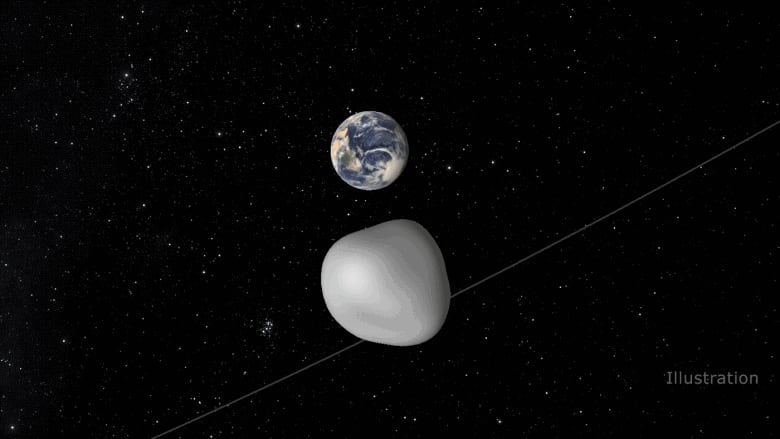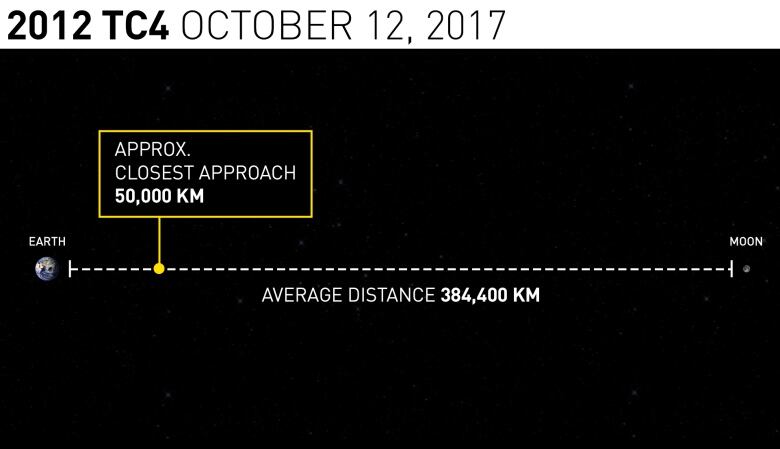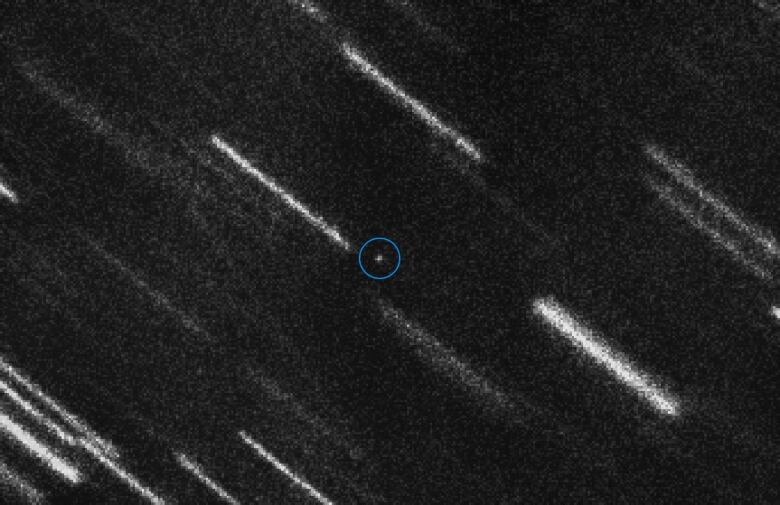Asteroid will pass Earth well inside moon's orbit, giving us a chance to practise for a collision
20-metre-wide rock will pass within 50,000 kilometres of Earth

Astronomers around the world will turn their eyes to the skyThursdayas a roughly 20-metre-wide asteroid will fly well within the moon's orbit, about 50,000 kilometresabove Earth.
While this asteroidcurrently poses no threat to Earth, scientists are hoping to gather information to refine its orbit. With government agencies, they are alsopreparingfor a day when a similarly sized asteroid could enter Earth's atmosphere.

One of the biggest reminders that such small rocky bodies orbiting the sun pose a threat to Earth came on Feb. 15, 2013. An asteroid many times brighter than the sun streaked across the early morning sky over Chelyabinsk, Russia.
People rushed to their windows, curious about what had brightened the sky so brilliantly. Minutes later, an air blast shattered windows, injuring thousands.
While Comet Shoemaker-Levy 9, which crashed into Jupiter in 1992, alerted the scientific community and the public to the fact that we live in a cosmic shooting gallery, Chelyabinsk brought the reality closer to home.
"Shoemaker-Levy 9 brought home the fact that impacts happen. So people started taking the asteroid threatmore seriously, and a lot more surveying was done after that,"Peter Brown,professor of physics and astronomy at Western University in London, Ont., told CBC News.
"But until Chelyabinsk,it wasn't really brought home at a governmental levelthat this is something we have to prepare for."
Scientists estimatemore than 90per cent of large asteroids have been catalogued, but it's the smaller ones that pose a challenge. The galaxy is a large place, and it's difficult to find smallobjects. According to Brown, an object like 2012 TC4 enters Earth's atmosphere on average once every 20 years. And one passes between Earth and the moon every few weeks.
This particular asteroid has garnered a lot of attention from the astronomical community because,typically, asteroids this small are detected late. But this one was found in 2012.

"Normally something like this would only be detected a week or two out," Brown said."Its main utility is it's going to be used as a sort of dry run for a lot of planetary defence processes and procedures internationally.
"It's a very fast-moving, relatively faint kind of object.Exactlythe kind of object you'd expect to impact Earth. So it's an excellent chance to test this thing out."
The asteroidwill come closest to Earth at 1:42 a.m. ET on Oct. 12, over the South Pacific Ocean.
Improving predictions
Brown said agencies around the world conduct emergency simulations about once a year. These exercises explore potential impacts of a body similar in size to 2012 TC4 in which there would likely be no significant risk to the ground or larger. Just this past October, such an exercise was conducted by NASA and FEMA.
Astronomers need to makefurther observations for theirforecasts.The next closepassof this asteroid will be in 2075. Usingcurrent observations, astronomers predict a chance of impact then at only onein 2,000.

An asteroid's orbit can bechanged by several factors. This one's will change as a result of passing so close to Earth. Sunlight, too, affectsthe orbit through a processknown as the Yarkovskyeffect, and it is minor in the short term.
"The orbit will be very significantly changed by this close approach," Brown said. "And that, together with the uncertainty of theYarkovsky, are the things that really make this encounter in the 2075-2079 time range most uncertain still."
More than a dozen observatories, universities and laboratories around the world will be watching the asteroid on Thursday, according to NASA.
"Some time in the next few years, we'll have a conversation where it's going to be, 'This thing will hit in two days, and what are we doing?'And a lot of what we're doing will be learned in this exercise this week,"Brown said.












_(720p).jpg)


 OFFICIAL HD MUSIC VIDEO.jpg)
.jpg)



























































































